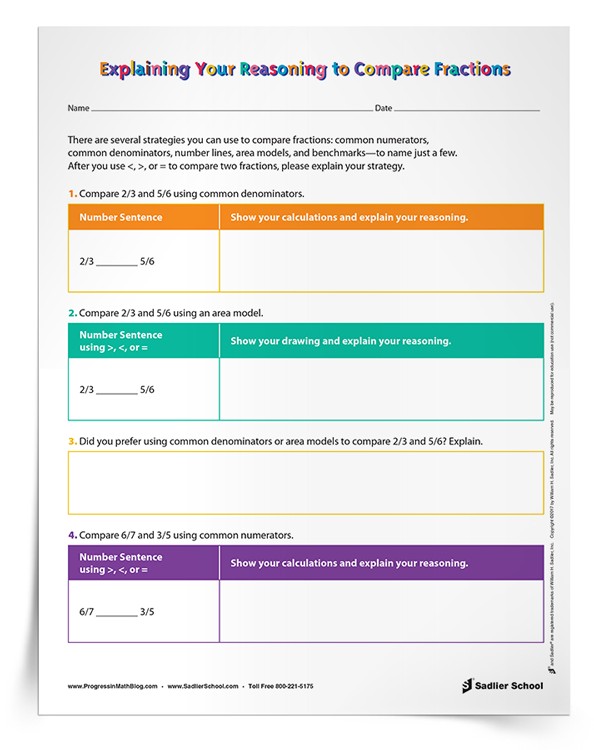Comparing fractions is a fundamental skill in mathematics. While benchmarks like 0, 1/2, and 1 are helpful, understanding how to compare fractions without them provides a deeper understanding of fractional relationships. This article explores several strategies for comparing fractions without relying on benchmarks.
Strategies for Comparing Fractions Without Benchmarks
Several methods allow for accurate comparison of fractions without using benchmarks. These strategies encourage a deeper understanding of fraction concepts and relationships:
1. Equivalent Denominators
The simplest method is finding equivalent fractions with common denominators. If two fractions share the same denominator, the fraction with the larger numerator is the greater fraction. For example, to compare 3/5 and 2/5, we see they have the same denominator. Since 3 is greater than 2, 3/5 is greater than 2/5.
2. Equivalent Numerators
When two fractions have the same numerator, the fraction with the smaller denominator represents the larger fraction. This is because a smaller denominator indicates larger parts of a whole. For example, 2/3 is greater than 2/5 because thirds are larger than fifths.
3. Related Denominators
If denominators are easily related (e.g., one is a multiple of the other), scaling one fraction to create a common denominator makes comparison straightforward. For example, to compare 3/4 and 5/8, we can convert 3/4 to 6/8 by multiplying both the numerator and denominator by 2. Now, with a common denominator of 8, we see that 6/8 (or 3/4) is greater than 5/8. This strategy is especially helpful when working with halves, fourths, and eighths.
4. Related Numerators
Similar to related denominators, if numerators are easily related, scale the fraction with the smaller numerator to match the larger one. Then, compare the resulting denominators. For instance, to compare 2/5 and 4/7, double 2/5 to get 4/10. Since tenths are smaller than sevenths, 4/7 is greater than 4/10 (or 2/5).
5. Number Line Models
Visualizing fractions on a number line can clarify their relative size. Divide a number line into equal parts representing the denominators and place the fractions accordingly. The fraction further to the right is the greater one. This method reinforces the concept of fractions representing points on a continuum.
 Example of number line with fractions
Example of number line with fractions
6. Area Models
Representing fractions as parts of shapes (circles, rectangles, squares) provides a visual comparison. Divide the shapes into equal parts corresponding to the denominators and shade the appropriate number of parts for the numerators. Comparing the shaded areas allows for a visual determination of the larger fraction.
7. Cross Multiplication
While sometimes debated, cross-multiplication offers a procedural way to compare fractions. Multiply the numerator of the first fraction by the denominator of the second and vice versa. If the product from the first fraction’s numerator is larger, then the first fraction is greater. For example, to compare 3/4 and 2/3: 3 x 3 = 9 and 4 x 2 = 8. Since 9 > 8, 3/4 > 2/3.
Conclusion
Comparing fractions without benchmarks strengthens foundational understanding of fraction relationships. By employing these strategies—equivalent denominators/numerators, related denominators/numerators, number lines, area models, and cross-multiplication—students develop a more robust and flexible approach to working with fractions. These methods encourage deeper thinking and a more comprehensive grasp of fractional concepts.